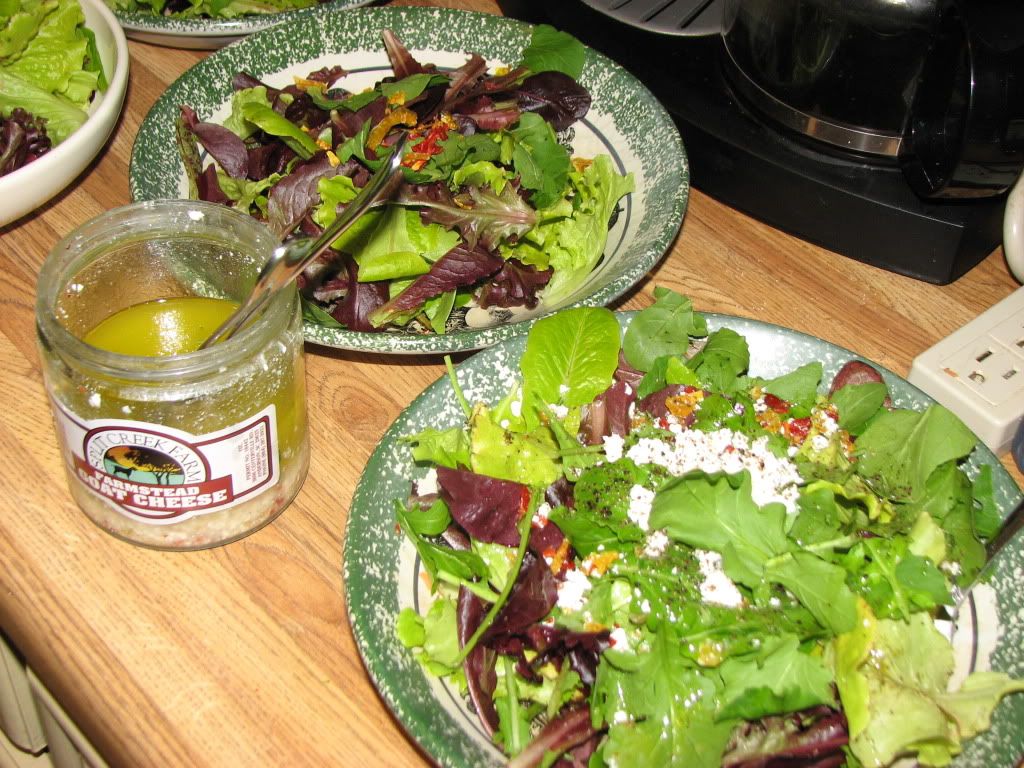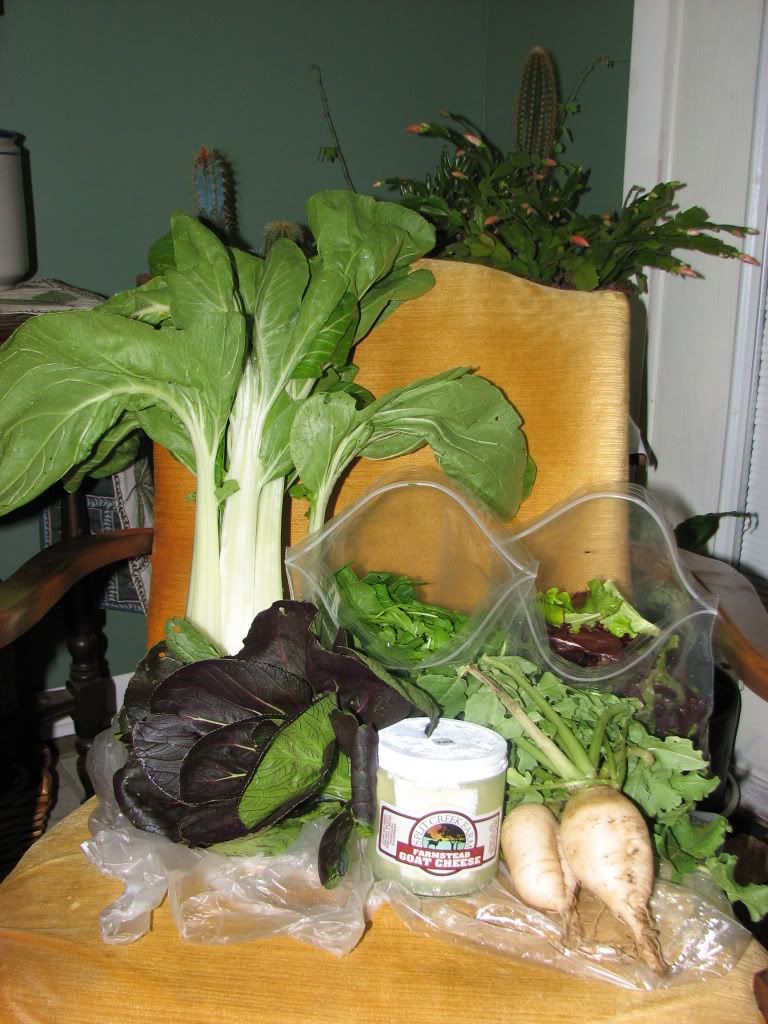How to Get Local Food in the Winter
This is similar to a post I published in August, but I think winter food buying bears special mention.
Just a handful of years ago if I didn’t plant enough food for my family over the winter my only option was to buy hard, bland produce shipped from around the globe to my conventional supermarket.
Not this year. I didn’t plant enough (woops!) but the local food movement has grown enough to rescue me from the mistake.

Photo Caption: Vibrant greens are my favorite winter vegetable. They grow so well in cool greenhouses and polytunnels.
Local food isn’t even difficult to come by. Today my mother and I ran out to a Greenville, SC business called Scratch to take advantage of their grocery cases in the front of the store. Scratch is mostly a healthy take-out business — if you aren’t much of a cook you can purchase ready-made meals (with as many local ingredients as they can find) and heat them up later in the week.
We didn’t buy our food prêt à porter but we did get a couple large bags of greens (mesclun mix and baby arugula), radishes, vine-ripened hydroponic tomatoes (from Hurricane Creek Farm in Pelzer, SC), and goat milk feta (Split Creek Dairy in Anderson, SC). The greens came from Greenbrier Farms in Easley, SC.
Combined with the black walnuts we harvested in the fall and a nice balsamic vinaigrette, these ingredients made a lunch salad that banished any wistful reminiscences for July harvests.

Photo Caption: Buying from several nearby farms at once is easy when using Locallygrown.net. These items came from Greenbrier Farms, Putney Farm, and Split Creek Dairy but were all picked up at a single drop-off location near my house.
I have become so accustomed to seasonal produce that it feels strange to eat something that was shipped here from someone else’s summertime. Jet-lagged veggies are decidedly inferior to those harvested within miles of my home.
One of my favorite methods of finding local food is through Locallygrown.net. This is a national website so you should be able to find a market close to where you live. Consider it an online farmers market. You order your food online and then pick it up at a convenient drop-off point at a specified date and time.
The market closest to me is the Upstate SC one. A quick glance at the growers list shows me that I can purchase from 22 farms, dairies, and other local food sources. Today my produce selection includes fresh herbs, bok choi, collards, root veggies, hydroponic tomatoes or bell peppers, and various salad greens. There are more than 20 dairy products to choose from, fresh local eggs, and and a large selection of meats.
Once I order just I pick my food basket up on Tuesdays between 4:00pm – 5:00pm at a coffee shop near my house.
Other sources for local food in the winter can be found in these directories:
Why go through so much trouble? Because dinner is not just fuel. Besides, it isn’t trouble at all once it becomes a habit.
2 thoughts on “How to Get Local Food in the Winter”
Comments are closed.

Karen - January 28, 2010 8:33 pm
Great post, Eliza! I’d love it if you would post some of your of your recipes, too.
Sustainahillbilly
Twitter: appalachianfeet
- February 3, 2010 2:26 am
Hey Karen! Making sure you saw the new tomato tart recipe post:
http://www.appalachianfeet.com/2010/02/01/how-to-make-homegrown-sun-dried-tomato-feta-caramelized-onion-tart-warugula/
Also, you can use the “How to category” drop down box on the top left of the screen to search for other recipes. I’m planning to add lots more as time goes on.